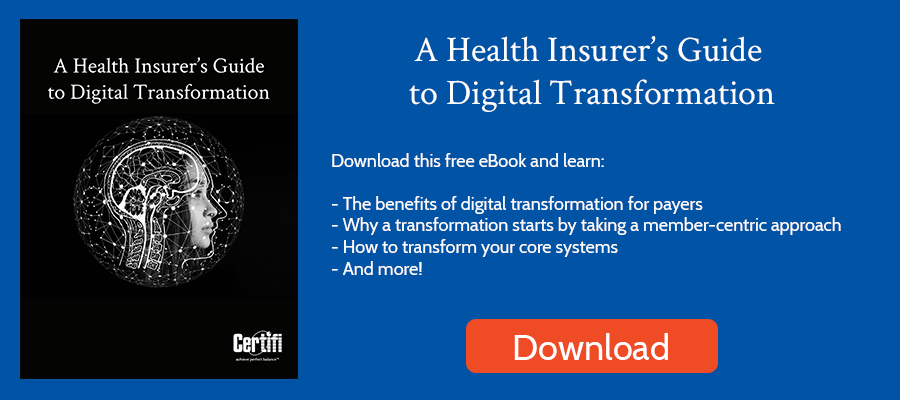Electronic prior authorizations can streamline the authorization process by enabling faster decisions. Electronic processes can also improve the patient experience, speeding up time to care compared to manual submissions.
In fact, a study by AHIP found that the time between submitting a request and receiving a decision decreased by 69%. Meanwhile, 71% of providers who implemented electronic prior authorizations reported faster time to patient care.
Additionally, the same study found that prior authorizations submitted electronically reduced phone calls to providers while helping providers better understand decision requirements.
With those apparent benefits, you can see why the Centers for Medicare & Medicaid (CMS) recently released a proposed rule that requires electronic prior authorizations in certain situations. What does the proposed electronic prior authorization rule mean for health insurers? Here’s a quick primer:
What are Electronic Prior Authorizations?
Before we examine the proposed rule requirements, let’s understand electronic prior authorizations. Health insurers use prior authorizations to review whether to cover medical treatment or medication. They aim to drive down costs by preventing unnecessary procedures and medications.
Though the process varies, a provider typically faxes or calls an insurer to deliver the prior authorization information. The insurer reviews, requests more information, and approves or denies the request. A rejection may lead to an appeal. No standard has gained a critical mass, so providers may need processes and forms unique to each insurer, complicating the process. Insurers may take days to return incomplete submissions to a provider, further delaying care.
In an electronic process, the provider digitally retrieves prior request information from insurers in real-time. As a result, providers know what procedures or medications require prior authorization and what information insurers require in a submission. Providers then send the necessary data electronically to get near real-time responses, especially for prescriptions.
How Does this Electronic Prior Authorization Proposed Rule Impact Health Insurers?
The proposed rule will require Medicare Advantage, Medicaid managed care, Affordable Care Act plans, and state Medicaid agencies to streamline prior authorization processes. The changes would go live on January 1, 2026.
Specifically, CMS envisions payers creating an FHIR (learn more about this health data standard) API that enables a provider to:
- Query the insurer’s system to determine if the service requires prior authorization. This requirement excludes drugs.
- Help providers populate the data necessary by delivering request documentation requirements.
- Provide the status of prior authorization requests
- Provide a specific reason for any denials
In addition to an API, insurers must complete requests within 72 hours for those marked urgent and within seven calendar days for non-urgent requests. Federal ACA exchange plans are exempt from this requirement.
Finally, the rules require insurers to report prior authorization metrics on their website or other publicly accessible URL annually. Insurers must report these metrics for the first time by March 31, 2026.
You can learn more about the specific requirements in the Federal Register here.
What Was the Industry Response to the Proposed Electronic Prior Authorization Rule?
The Better Medicare Alliance, a research and advocacy organization, released a press release titled, “BMA Applauds CMS Prior Authorization Proposed Rule,” signifying their approval of the proposed rule.
AHIP, a national association whose members provide health care coverage, had a similar response stating, “AHIP’s Fast PATH demonstration showed that electronic processes for prior authorization are essential for ensuring that patients receive swift, evidence-based care that improves value and reduces administrative burdens for everyone. This proposed rule would require clinicians and hospitals to adopt electronic prior authorization to meet certain quality measures, ensuring that we are all incentivized to work together for a better patient and clinician experience that improves satisfaction, efficiency, and affordability for everyone.”
What are the next steps?
CMS published the rule in the Federal Register on December 13, 2022, and now enters a commenting phase before being finalized.
Certifi’s health insurance premium billing and payment solutions help healthcare payers improve member satisfaction while reducing administrative costs.



